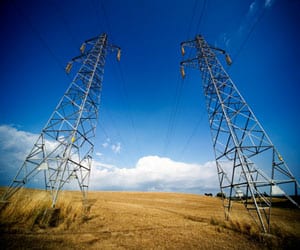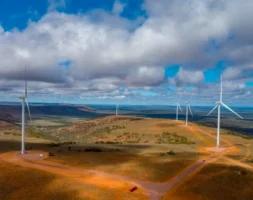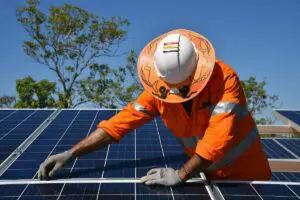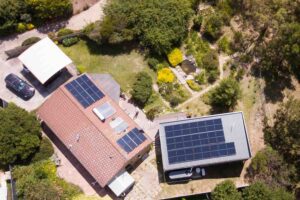Two weeks ago it was reported that a political dispute between Serbia and Kosovo is sapping a small amount of energy from the local grid, causing a domino effect across the 25-nation network spanning the continent from Portugal to Poland and Greece to Germany.
“The deviation from Europe’s standard 50 Hz frequency has been enough to cause electric clocks that keep time by the power system’s frequency, rather than built-in quartz crystals, to fall behind by about six minutes since mid- January.”
This is a good example a phenomenon known as the fragility of complex systems: the tendency for multilayered and interconnected systems like electricity grids, transport networks (think gridlock) and the world health system (think pandemics and antibiotic resistance) to become increasingly prone to failure as layers of organisation and connectivity are added.
Why? Complex systems have more levels and points of vulnerability.
There are more things that can go wrong, and when things do go wrong, the impacts can spread further throughout the system than would be the case with a simpler or more localised system.
To give an example, one of the advantages of electric cars is that electric motors have few moving parts, while internal combustion engines have hundreds. Electric engines are also more efficient.
Simplicity doesn’t always equal efficiency, but it does usually equal reliability. A system with multiple layers of complexity is more vulnerable to breakdown.
The counterargument is that complex systems usually have correspondingly greater layers of inbuilt safeguards and redundancies that result in the maintenance of a high level of resilience. In the case of weather and climate or natural ecosystems, resilience is the product of millions of years of evolution.
Even they have limits and breaking points, though, as we are seeing by pumping more CO2 into the atmosphere than it can cope with.
In human-made systems, resilience usually develops by trial and error. Fellow aficionados of plane crash television programs will know that it usually takes three things to go wrong before a big modern plane goes down. But mistakes often have to be made before technology, regulation or behavioural change results in an increase in system resilience.
This process – call it breakdown, learning and repair; or disease, diagnosis and treatment – needs to be repeated as system complexity increases over time and space. And every such every failsafe or backup system adds its own layer of cost and complexity.
Growing complexity
Electricity in essence is not complex. But the Promethean process of turning the physical properties of electromagnetism into circuits to safely harness its properties for power, lighting, heating, electronics and so on adds a layer of complexity.
It’s like putting lightning in a box. Converting from DC to AC or vice versa complicates the process.
This system becomes still more complex when we construct a geographically dispersed grid, and have to install substations to distribute energy and to deal with voltage and frequency fluctuations in a system that must be synchronised over thousands of kilometres to within tens of milliseconds.
And interconnectors, too, when we want to link previously separate regions.
A financial market to trade energy creates yet another layer of complexity: the spot and futures markets; forecasting and settlements; inter-regional trading; hedging contracts and power purchase agreements.
More recently, the rooftop solar revolution has led to two-way energy flows, including times and places where the net energy flow is back up the system to substations – something they were not designed for but must be adapted to suit.
Even more layers of complexity are emerging, including:
- the growth of variable, non-synchronous large scale renewable energy generation;
- the rise of home automation (often connected to global IT systems) and Internet of Things-enabled appliances and devices; and
- the need for the energy system to respond to the increasing variability of Australia’s climate (eg, by having greater strategic reserves to call on during heatwaves).*
The classic case of fragility in Australia’s grid is the blackout in South Australia on 29 September 2016.
To put it simply, a the impact of a localised severe weather event (“two tornadoes with wind speeds between 190 and 260 kilometres per hour tore through a single-circuit 275-kilovolts transmission line and a double-circuit 275kV transmission line, about 170km apart”, says the ABC) led to a statewide “black system” or total shutdown due to the cascading impacts of supposedly protective responses higher up in the system.
The responses were, in the case of the protection settings of the wind farms involved, apparently too conservative or sensitive.
In other words, the multiple layers of technical complexity in a system undergoing rapid change, and its dispersed nature, resulted in the impacts being felt far more widely than they might otherwise have.

Climate change responses
In Australia’s electricity system, grid resilience has typically been equated with short term security and reliability, and maintained by tweaking the technical and operational parameters of the system.
But a range of potential threats to electricity systems is increasingly likely to expose the fragility of this complex system: climate change; cyberattacks; and an economic crisis.
Let’s consider only the first of these. We know that higher summer temperatures are increasing the incidence of thermal overload on transformers; and that the greater incidence and intensity of bushfires and severe storms is increasing the risks to poles and wires.
There are other impacts, though, that we need to consider, including coastal inundation, flooding and reduced rainfall in some areas.
The industry has already turned its mind to these risks. Responses to date include risk assessment planning, recommending more interstate interconnectors* to provide backup supply in case of regional outages; taking customers offgrid in areas with high bushfire risk; and speeding up the rollout of smart meters, which enable easier fault identification.
All well and good, but there is so much more we need to think about and do.
The best attempt to date to plan for a more resilient grid is the CSIRO/Energy Networks Association’s 2016 Network Transformation Roadmap. It recognised the increasing complexity of this ‘system of systems’ and proposed solutions to deal with the technical challenges.
It didn’t, though, specifically consider increasing system complexity to be a risk in itself.
This week AEMO took a big step in this direction with the release of its “observations” on Operational and market challenges to reliability and security in the NEM.
AEMO is concerned that “the current market design is not sufficiently valuing resource characteristics of flexibility and dispatchability” to respond to increasing VRE and climate change impacts, and proposes a number of market reforms to improve system security and reliability.
Balancing independence and dependence
At a conceptual level, AEMO’s response amounts to increasing resilience by building more safeguards or levels of redundancy into the system as it becomes more complex and unpredictable. This is a valid response, but in the longer term there are others worth considering.
Abandoning the system – by going offgrid, say – isn’t a financially viable option for most people at this time. Neither is it a good use of resources, with excess solar energy going to waste when the batteries are full and the batteries sitting idle much of the time.
After Hurricane Maria ripped up Puerto Rico’s grid last September (see image above), Elon Musk claimed that Tesla’s solar and battery systems could restore power across the island.
Essentially Tesla would replace the old, unreliable, oil-dependent centralised grid with a series of offgrid systems or microgrids.
Going totally local is not always the best solution, though. Aside from the relatively high cost and inefficiency (ie, low load factor) of offgrid systems, even an isolated microgrid may not always be the best solution.
A big fat hurricane is one thing, but if the outage is caused locally (a bushfire or tornado, say), the lack of a connection to a centralised grid could be a minus, not a plus.
Logically, a grid that is composed of interconnected microgrids that can be islanded from the main grid when a crisis strikes would appear to be the happy medium between a grid that is either totally centralised or entirely composed of offgrid systems.
That might work for individual households and businesses, and for purpose-built microgrids. At present, though, most towns and cities are unable to operate in islanded mode. Being designed to be supplied from a distance, they simply shut down if the centralised supply is cut.
To work differently, they need more local generation and metering and communication systems that are suited to part-time or backup microgrid use; and rules that recognise the costs and benefits of local use of the system.
Ideally we would eventually see a system of nested or meshed microgrids at different levels of the system, from individual buildings through individual feeders to distribution and zone substations covering whole towns, suburbs or sub-regions. It sounds expensive, but then, so are prolonged outages.
These microgrids could talk to and supply each other without the need for centralised hub-and-spokes communications.
Valuing resilience
Other responses to increase system resilience in the face of climate change might include:
- Less investment in areas or assets at greatest risk of climate change impacts.
- Ensuring there is a variety of scales, locations and types of renewable generation and storage available.
- Undergrounding power lines.
- Decreasing reliability standards where this might favour a greater variety of supply and distribution types.
- And, as ever, ensuring that consumers are better incentivised to use less energy to meet their needs.
All fine in theory; but how do we value resilience in the grid?
In other words, how do we place a dollar or other value on long term planning and investments into infrastructure that takes such threats seriously?
There is nothing in the National Electricity Rules to incentivise taking climate change impacts into account when making investment decisions – particularly in relation to high impact but relatively low probability events like severe weather or longer term climatic changes.**
An example of the problem. In AEMO’s otherwise excellent Integrated System Plan Consultation, climate change raises only one single entry, and that related only to “climate and energy policy uncertainty”.
As a result, the Snowy region and adjacent regions in NSW and Victoria are mooted as potential Renewable Energy Zones.
If you look at the Federal Government’s Climate Analogues tool, 2050 projections for the Snowy region show warming of up to 3 degrees and a reduction in rainfall of up to 15 per cent.
This might be the worst case scenario, but globally, climate change data are mostly tracking at the upper end of earlier IPCC projections, so we should take this prospect seriously.
Yet if you then look at the Snowy 2.0 Feasibility Study, how many references are there to climate change and reduced rainfall as risks potentially affecting the engineering and financial viability of this $4 billion plus taxpayer-funded project?
As far as I can tell, none. As a potential stranded asset, that ranks up there with the NBN.
A holistic vision
Indian Buddhism spoke of a vast net of jewels hanging from the palace of the great god Indra. Each jewel reflects and is reflected in every other jewel in an infinite, multidimensional net of hologram-like connections.
Whether you think of each jewel as a building, a community or a substation, the vision is one of neither total dependence nor complete independence but mutual interdependence.
Mark Byrne is Energy Market Advocate at the Total Environment Centre
* See, eg, AEMO’s 2016 National Transmission Network Development Plan
** For instance, in the regulatory investment tests (RITs) for transmission and distribution.












